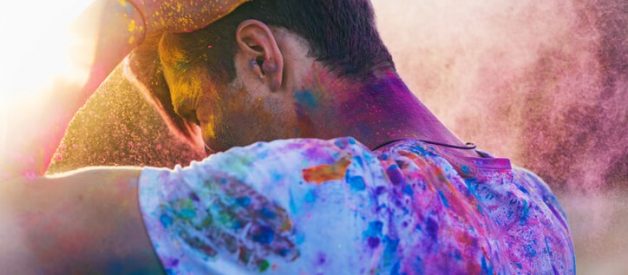
Over the past several years, themed charity races exploded in popularity. Everything from electric runs to beer crawls and even costume parties make 5K runs trendier and social media-worthy. The Color Run, in particular, drove this boom, becoming the largest running series in the world. To date, organizers doused over six million runners across 35+ countries in the Color Run?s rainbow-colored powders. While exercise is great for you physically, the powder giving the Color Run its signature look may not be. Any race where individuals run through and inhale either colored talcum powder or cornstarch particles is potentially worrisome. Especially since inhaling talc or cornstarch particles may eventually lead to lung cancer.
Could the Color Run Damage Your Lungs?
The Color Run and other similar races say the powder they throw is simply cornstarch tinted with an FDA-approved dye. They also say you?re only supposed to throw it onto the lower half of your body. But many runners who completed the race can attest that the powder gets so thick it looks more like smoke. In fact, the Color Run?s website recommends bringing sunglasses or goggles and a bandana to wear to prevent excessive inhalation.
Lung specialist Dr. Brian Christman currently serves on the American Lung Association?s Scientific Advisory Board. Last year, he told the NewsChannel5 reporters that breathing in even small amounts of cornstarch could pose a health hazard. After watching the Color Run, Dr. Christman said, ?You?d be hard-pressed to find a lung doctor who would advocate that.? He also stated that respiratory exposure to hazardous particles can have long-term lung effects, especially on young children and babies.
?Those particles can be in there for quite a while in your lungs,? explained Dr. Christman. ?Some of these tinier particles can get absorbed, they get taken up into the lymphatics and the bloodstream.?
Studies Show Even Nontoxic Powders Pose Respiratory Risks
A 2003 study published in The European Respiratory Journal investigated whether cornstarch used on surgical gloves could induce airway inflammation. Researchers found inhaling cornstarch glove powder causes ?development of a subclinical inflammation in the airways, with an accumulation of eosinophilic granulocytes.? The results also showed that inflammation can cause tissue damage, adhesions, and a severe inflammatory reaction that scarred individuals? lungs.
Since the Color Run uses much more powder, the risk is similar to a workplace illness called ?baker?s asthma.? Occupational hazard studies show individuals who inhale nontoxic powders can suffer respiratory failure, collapsed lungs, and even COPD. Even now, baker?s asthma is among the most frequent occupational respiratory disorders reported worldwide.
Powder Similar to That Used In Color Run 5K Explodes at Taiwan Event
The Color Run douses participants in nontoxic colored cornstarch, but the race?s website doesn?t mention that this powder is highly flammable. During a 2015 Taiwan ?Color Play Party,? a hot spotlight triggered the fiery explosion that burned over 500 people. Color Run powder samples showed similar flammable properties, prompting criticism from Naples, FL fire chief Stephen McInerny. Additionally, powder samples from a competing race called the 5K Color Blast tested 97% positive for Decon rat poison.
Dr. Ngee Sing Chong, a chemistry professor at Middle Tennessee State University, examined Color Blast powder samples prior to testing. The powder particles appeared jagged and structurally similar to silicates (such as talc or asbestos) under a microscope. Dr. Chong indicated that 5% of the particles were small enough that runners could still inhale them through a bandana.
Talcum Powder Inhalation Risks Include Lung Cancer, Talcosis
While the Color Run?s organizers insist they only use cornstarch, competing races may choose flame-resistant talcum powder instead. Unfortunately, talc particles can easily penetrate runners? lungs, leading to respiratory inflammation and long-term pulmonary damage. Cancer.org backs these claims, stating that talc in its natural form may contain trace amounts of asbestos and other minerals.
Over time, breathing in talcum powder can cause:
- Wheezing
- Coughing
- Pneumonia
- Asthma
- Pulmonary talcosis
- Interstitial lung disease
Clinical studies show a strong link between chronic infection, inflammation, and lung cancer. While the Color Run may not directly cause cancer, inhaling talc or cornstarch may be a contributing factor.
What Talc Victims Can Do
If you or someone you love sustained injuries from talcum powder exposure, you may qualify for a cash settlement.
Complete your talcum powder compensation evaluation form now to see if you may be eligible for compensation. Then, an experienced advocate will call you to discuss your compensation options and possible next steps for filing your claim.
Related: Talc Trial Reveals J&J Knew About Asbestos Risks


